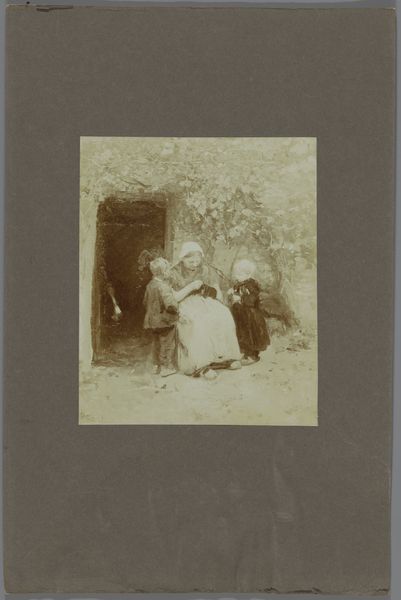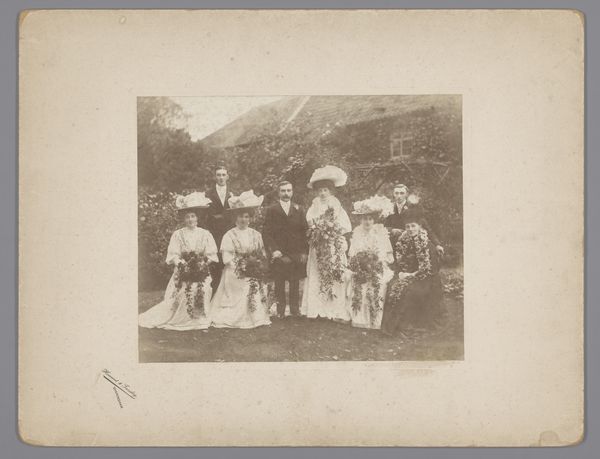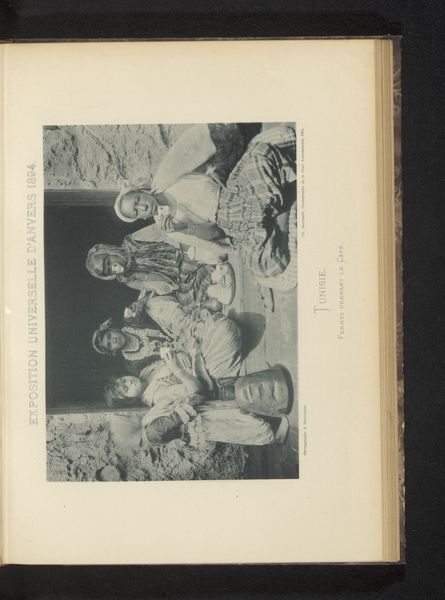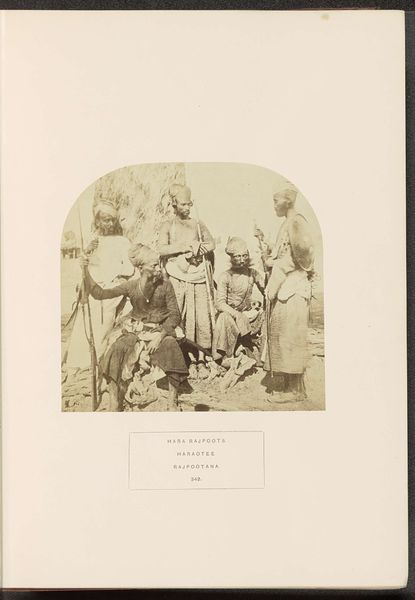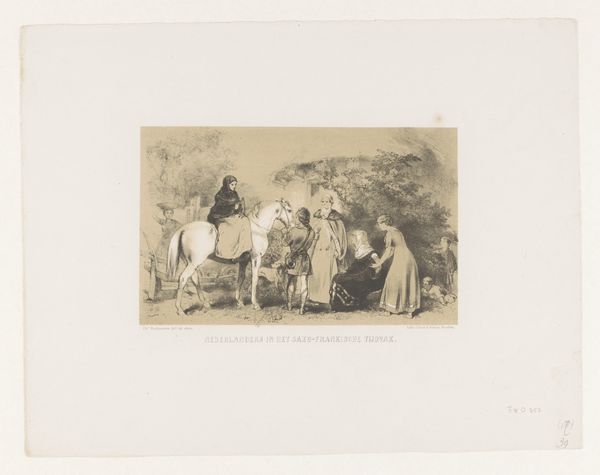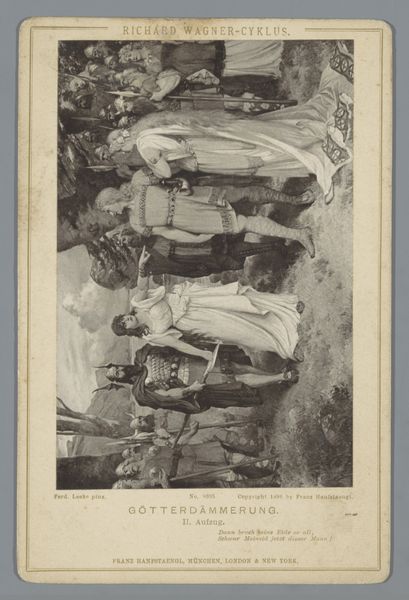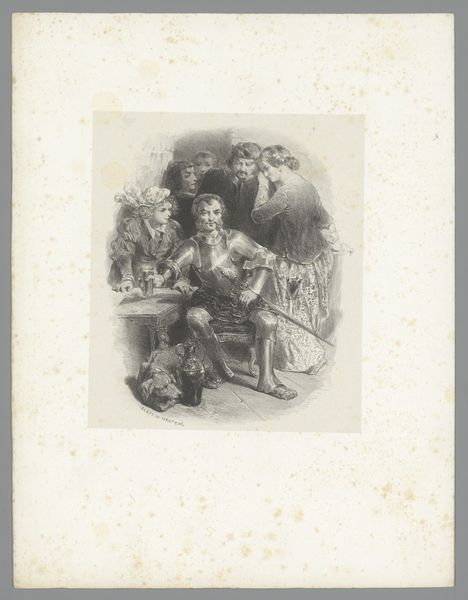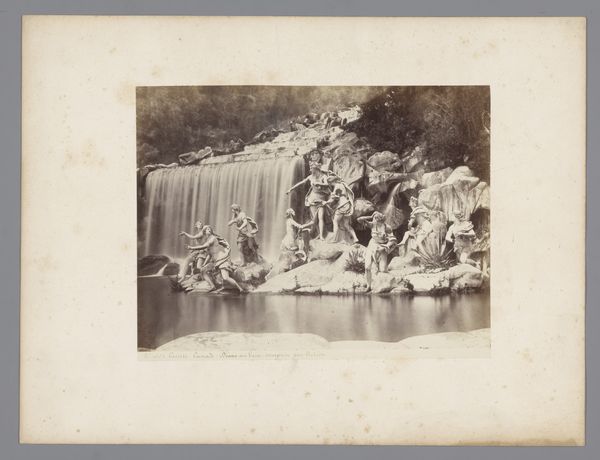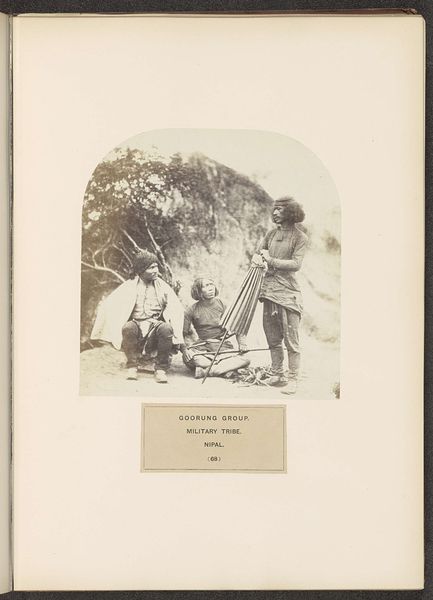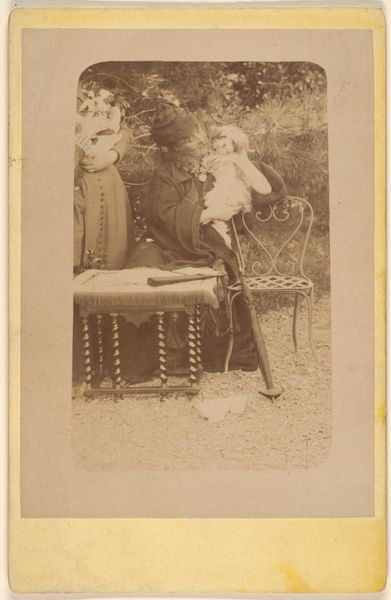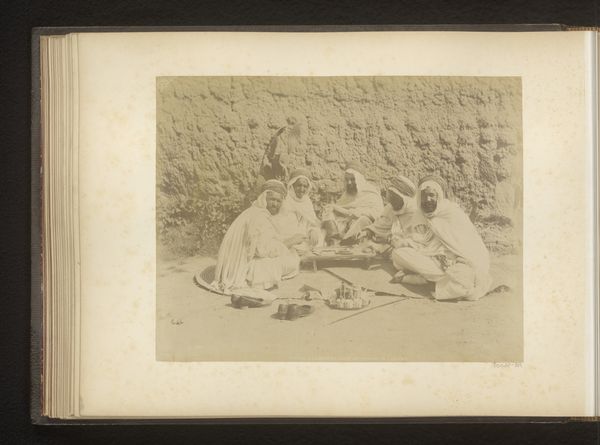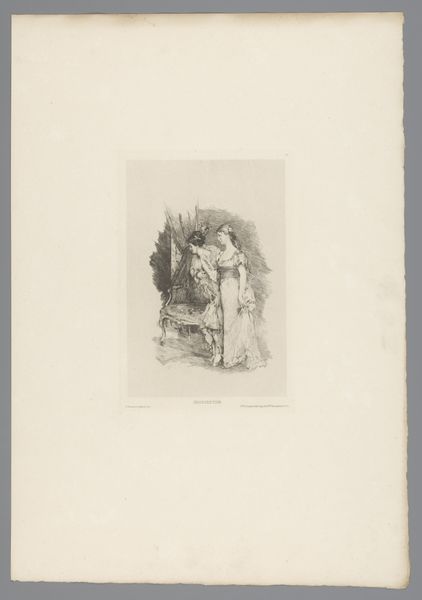
Groepsportret van een toeristisch gezelschap in Valkenburg op een rotshelling 1890 - 1920
0:00
0:00
photography
#
portrait
#
photography
#
genre-painting
Dimensions: height 168 mm, width 118 mm, height 255 mm, width 203 mm
Copyright: Rijks Museum: Open Domain
Curator: Let’s turn our attention to this group portrait taken between 1890 and 1920, by Jos. Crolla-Falise. It's titled "Groepsportret van een toeristisch gezelschap in Valkenburg op een rotshelling"—a tourist group in Valkenburg on a rocky slope. Editor: My first thought is how consciously arranged they are; not a candid snapshot, but a staged performance for the camera. The attire and poses, particularly that parasol… they are proclaiming a certain class status. Curator: Precisely. Valkenburg was a burgeoning tourist destination at the time, particularly for the upper middle class. The image itself becomes a document of leisure, solidifying their social position. The studio’s imprint becomes part of that economy. Editor: Yes, it seems that the rocks aren’t merely a scenic backdrop, but something being actively conquered and consumed by the tourists, physically posing on top of the environment! And how were these photographs mass produced, developing the images for purchase after? The availability speaks to changing material conditions allowing leisure and consumerism. Curator: Think too, about the wider context; photography at this time was transitioning from studio portraiture to more portable formats, influencing tourism itself! People began traveling specifically to capture and collect images. These "souvenirs" played a critical role in shaping the collective memory of a place. Editor: And how were the labor conditions involved? Was it local? Seasonal? Who extracted the resources to even produce this object in the first place? Curator: Good questions. Such pictures played into local economies. The photographer as both artist and entrepreneur is a key player. Crolla-Falise, by documenting this trend, participated in the very societal shift that photography helped enable. Editor: Considering the image as an object, how were these mass-produced mementos disseminated? Through shops or word of mouth? Consumption, distribution, labor-- these pictures aren’t simply neutral documents. Curator: Exactly. And by placing themselves so prominently in the image, they cement the experience and, perhaps, their superiority over it. Thanks to material production and cultural factors, what an interesting capture! Editor: Yes, each carefully positioned subject in their element—materials, context, and meaning deeply intertwined. A lot to unpack!
Comments
No comments
Be the first to comment and join the conversation on the ultimate creative platform.

